British A34 Comet Cruiser Tank Mk.1 type A
This A34 British Comet Cruiser tank can be found at the Deutsches Panzermuseum in the small military town of Munster, Germany. It is missing the canvas cover that went of the gun mantlet. It is in the markings of the Scottish Territorial Army Regiment 2nd Fife and Fofar Yeomanry. Their arm of service serial number was a white 53 on a red rectangle.
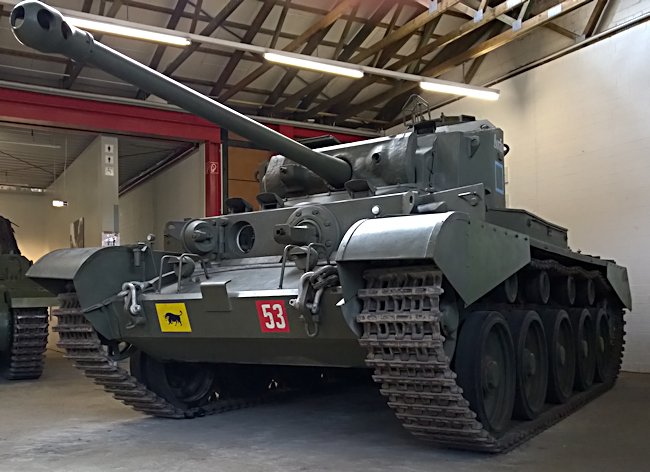
Preserved 77mm A34 Cruiser Tank Comet Mark I type A of the 2nd Fife and Fofar Yeomanry at the Deutsches Panzermuseum Munster
Location
The best way to get to the German Tank Museum (Deutsches Panzermuseum) in Munster is to fly to the very pretty historical city of Bremen. There are two places called Munster in German. Do not fly to the big city of Munster. The tank museum is in the small town village of Munster. The tram outside Bremen Airport takes you directly to the main railway station. Catch a train to the railway station called Munster(Ortze). Ortze is the name of the local river.
From Bremen Hbf main line station it is a 90 minute direct train journey to the east, through the attractive German countryside. You can get tickets at the station. There is no need to book in advance just check what time the last train leaves Bremen in the afternoon. The Tank museum is only a 10 minute walk from the Station. It is in Hans-Kriger-strasse in Munster. There are some good reasonably priced hotels and bars in the town centre.
On the way back make sure you spend time in the old part of Bremen. Try the local sausage, draught beer and ice cream before you catch the tram back to Bremen Airport.
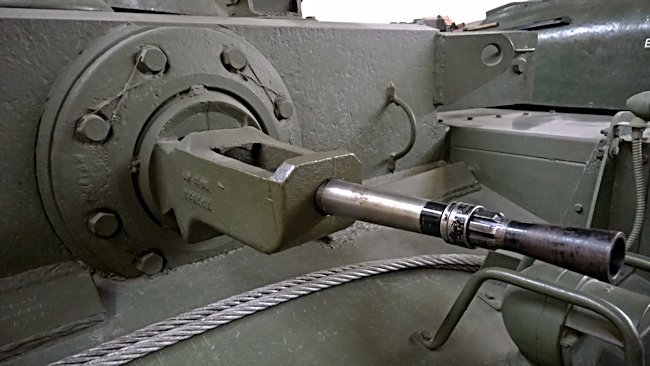
The Comet Tank was fitted with a hull mounted 7.92 mm Besa MG Machinegun and carried 5,175 rounds
Specifications
The tank was armed with a 77 mm high velocity HV gun that used a shortened 17pdr gun barrel. It used the same calibre armour piercing projectile as the 17-pounder anti-tank gun, but the cartridge case was from the older QF 3 inch 20 cwt anti-aircraft gun loaded to higher pressures. This new British tank gun's ammunition was not interchangeable with the Sherman Firefly's 17-pounder, so to prevent confusion over ammunition supplies, it was renamed the 77 mm HV gun although it was the same 76.2 mm calibre as the 17-pounder. It could fire armour-piercing discarding sabot (APDS) shells that could penetrate 256 mm of armour plating at 500 metres and 233 mm at 1000 meters. It was a Tiger and Panther tank killer.
The Comet tank was also armed with two 7.92mm Besa machine guns. One was in the hull and another next to the main gun in the turret. Production started in September 1944 and the first batch were delivered to the European battlefront in December 1944. A total of 1,186 were produced.
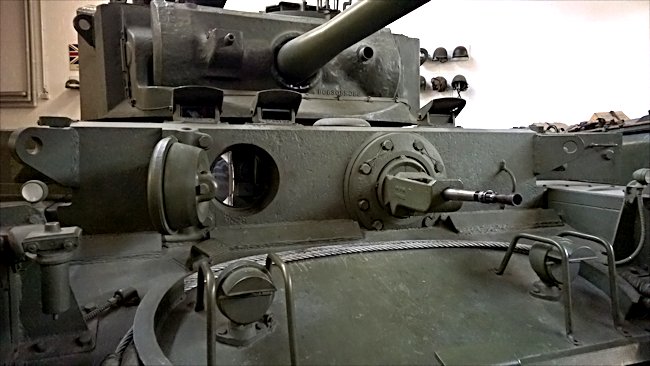
British 17pdr Comet Tank at the German Tank Museum in Munster. The canvas gun mantlet cover is missing.
The A34 Comet tank was powered by a Rover or Morris built Rolls-Royce Meteor Mk III V12 petrol engine that produced 600 hp. The the engine drove the rear sprockets through a five-speed Merritt-Brown combined gearbox and steering unit. The Comet was heavier than the Cromwell tank it was designed to replace. It had a combat weight up from 27 tons to around 33 tons. This meant that the top road speed of 32 mph (51 km/h) was slower than that of the Cromwell. It had an operating range of around 125 miles (202 km) before the crew needed to refuel. The tank was operated by a five-man crew: commander, driver, gunner loader and bow machine gunner.
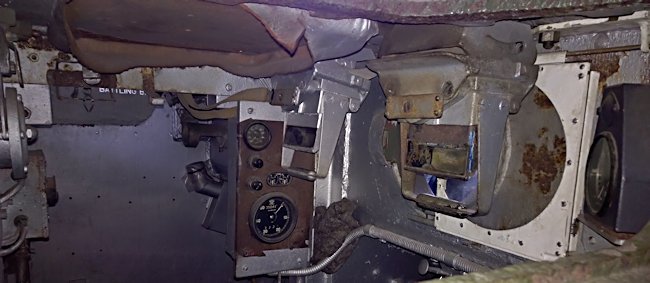
The driver's position inside a Comet Tank viewed from the side vision hatch. You can see the two periscopes he would use when all the hatches were closed in battle conditions.
Memories of the first few weeks at Tank Crew Training Camp
I was 17 years six months old when I arrived in Bovington in December 1944. We climbed of the bus and told to stand in three rows. This we did as a drizzle snow drifted across us. Three rows of young bedraggled civilians carrying an assortment of battered suitcases and all ready wondering what we had done. We were volunteers. We'd asked for it. Our three rows faced a row of WW1 huts and the door of one opened and two NCO's stepped out.
They walked side by side up and down the rows looking at us as we were sides of beef. A Sargent from the Grenadiers walked to the front and said we were a 'shower', an absolute shower. We were volunteers and had asked for it. I noticed his right hand had three fingers missing. The other NCO stepped forward and said his name was Mutter, and that he was an absolute bastard.
The snow was dropping faster as he yelled we follow him in three ranks to the Quartermaster Stores. I learned then that any soldier with 144 as the first three numbers of his serial numbers indicated they were volunteers and we had just began eight weeks of basic training and if we did not shape up enough to pass we would never see the inside of a Tank. It would be Infantry at once. The first few weeks we never even saw a tank. We drilled and marched in mud and snow and learned how to keep warm with a couple of thin army blankets sleeping on a straw mattress.
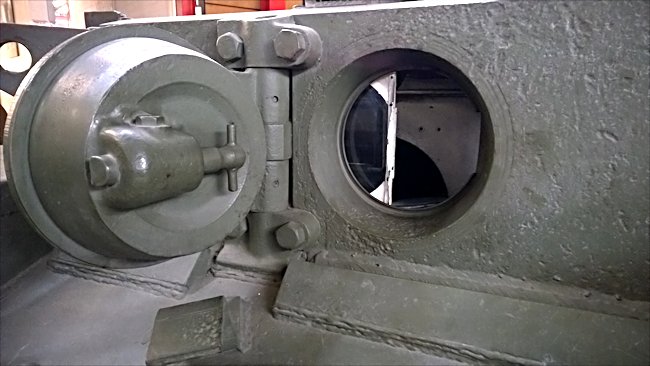
Comet Tank Driver's front hatch for road driving
In time we started to go to class and not have to do as much square bashing. Over the next few weeks it was Morse code, explosives, marching, PT, hand grenade throwing, long distance running and rope climbing. When would we see a tank? The day came when we were taken out to look at German tanks that had been captured and now sat on the hillsides of Dorset for our examination.
We all crowded around the huge tank as a sergeant pointed to a small hole in turret saying. 'Here is the entry into the Armour.' We were happy to see it was just a neat hole in an otherwise solid steel turret. Then we were ordered to mount and look into the turret. This we did, two men at a time. when I stared into the first tank turret ever, I saw what the lesson was. The walls has been blown in shreds of steel tuning the interior in a mix-master of instant death. Lesson number one the horror of an armor piercing shell. - Anthony Hayes
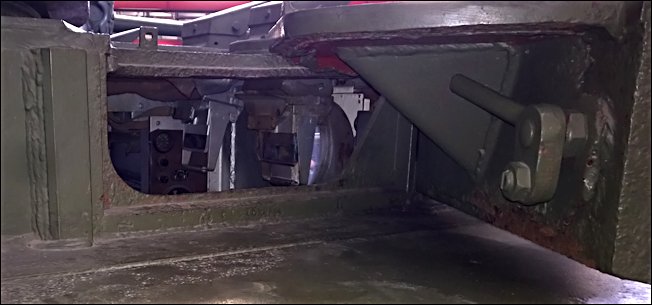
Comet Tank Driver's side hatch for road driving
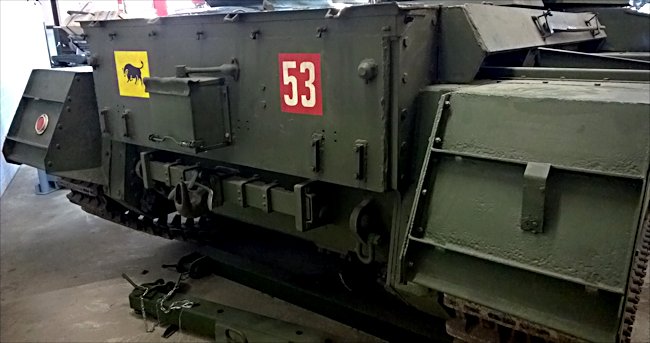
Rear hull view of a Comet Tank. The lack of double 'fishtail' exhaust pipes show that this is an early production Comet that saw service in WW2. It is a Type A. The rear double smoke projection boxes are missing.
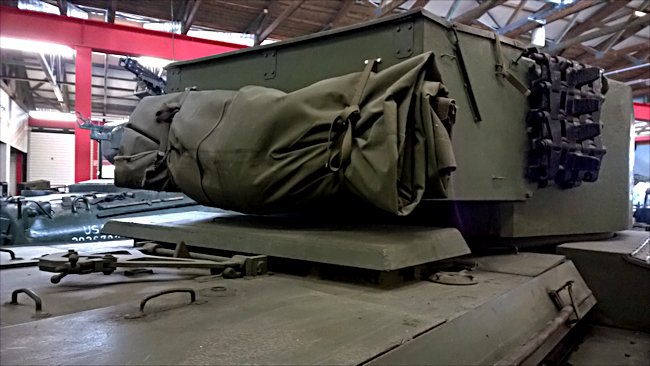
Rear turret view of the Comet Cruiser Tank at the German Tank Museum
WW2 Comet Tank books

